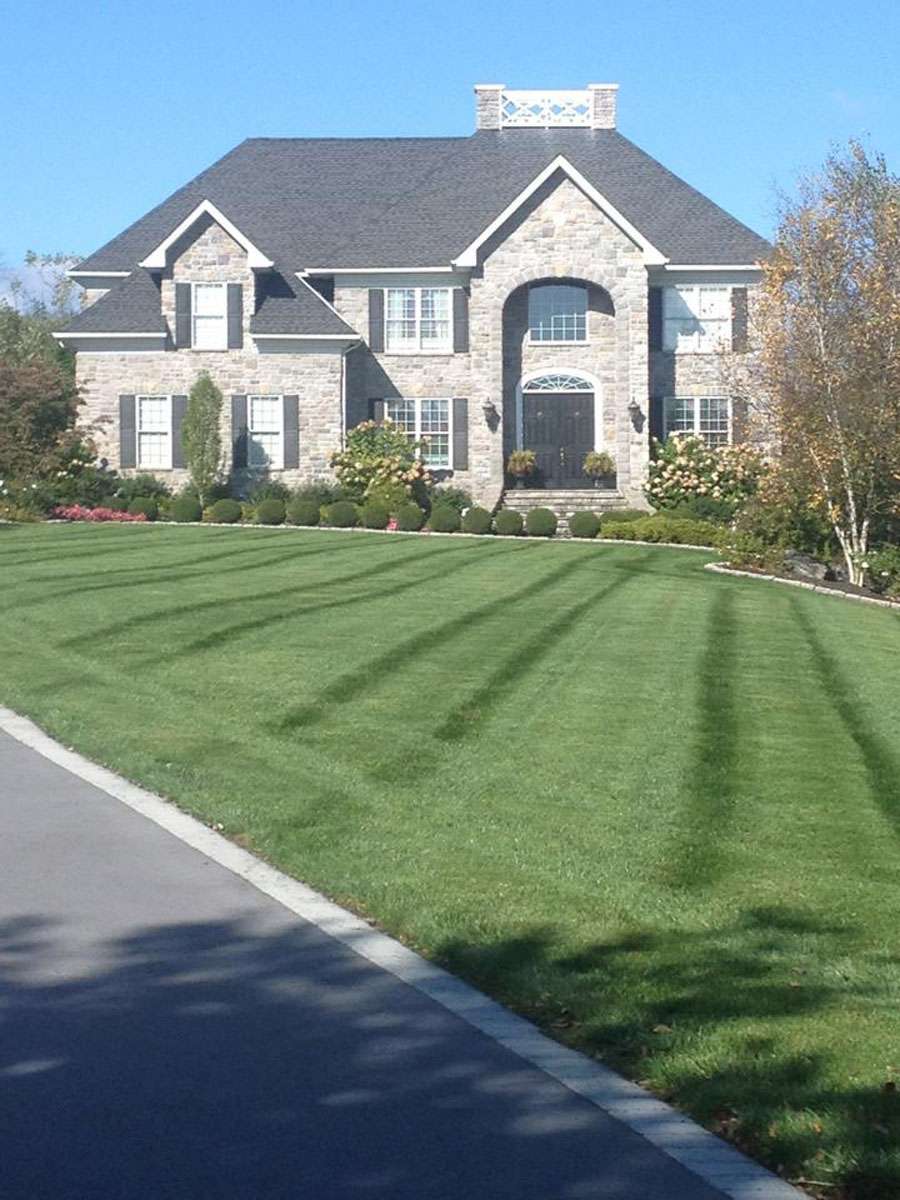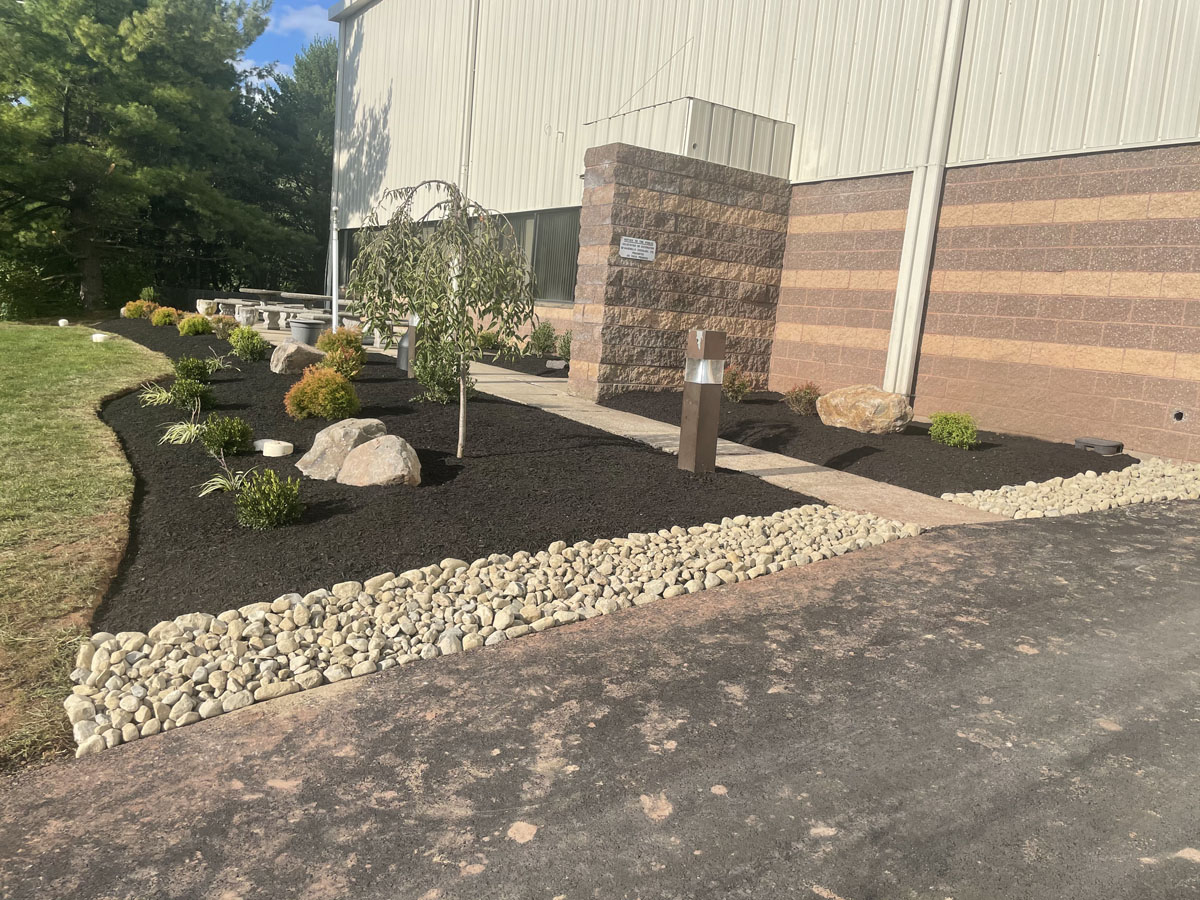Achieving a vibrant and healthy lawn begins beneath the surface. Healthy soil serves as the foundation for lush grass, providing essential nutrients, proper drainage, and aeration. JDR Lawn and Landscape emphasizes the importance of soil testing to determine its pH and nutrient levels before planting or making any amendments. Once the soil’s condition is understood, appropriate corrective measures such as pH adjustment with lime or sulfur, along with organic compost and fertilizers, can be applied to create an optimal environment for grass growth. Healthy soil not only enhances grass vigor but also assists in resistant against pests and diseases, ensuring a resilient and vibrant yard that can withstand the challenges of changing seasons.
Choosing the Right Grass Types for Your Climate and Soil
Selecting the proper grass variety is crucial for a thriving yard. Different grass types are suited to various climates, soil conditions, and intended uses. Warm-season grasses like Bermuda or St. Augustine are ideal for southern regions, thriving in hot temperatures and full sun, while cool-season grasses such as Kentucky bluegrass or fescue perform better in northern climates with cooler temperatures. JDR Lawn and Landscape recommends assessing your local climate, soil type, and the amount of sunlight your yard receives when choosing grass species. Picking the right type ensures that your lawn will be more resilient and require less maintenance, ultimately leading to a more vibrant, green expanse that remains healthy throughout the year.

Smart Watering Practices for Optimal Growth
Watering is one of the most critical aspects of lawn care, yet it’s often done inefficiently. Overwatering can lead to shallow root systems, disease, and fungal growth, while underwatering results in stressed, patchy grass. JDR Lawn and Landscape advocates for a balanced approach, recommending deep, infrequent watering sessions that encourage roots to grow deeper into the soil. Typically, early morning watering is best, allowing excess moisture to evaporate during the day and reducing the risk of fungal issues. Installing proper irrigation systems with timers can help ensure consistent watering habits that match your specific grass type, soil condition, and weather patterns. Proper hydration promotes strong root development and vibrant green color, making your yard more resilient and visually appealing.
Regular Mowing for Healthy, Dense Turf
Mowing might seem straightforward, but it’s a practice that significantly impacts the health and appearance of your lawn. JDR Lawn and Landscape advises mowing at the correct height for your grass type—generally keeping the blade height between two to three inches—to promote healthy growth and discourage weeds. Frequent mowing prevents grass from becoming too tall, which can shade out lower blades and promote disease. Conversely, cutting the grass too short stresses the plants and weakens the roots. Sharp mower blades are essential to avoid tearing the grass, which can lead to an increased risk of disease. Maintaining a regular mowing schedule with appropriate height settings encourages thicker, denser turf, resulting in a lush and vibrant yard.

Fertilization Strategies for Lasting Greenery
Feeding your lawn with the right fertilizers at appropriate times ensures it receives essential nutrients for vigorous growth and color. JDR Lawn and Landscape recommends a tailored fertilization plan based on soil analysis and grass type. Generally, applying nitrogen-rich fertilizers during the peak growing season promotes lush, green foliage, while lighter feedings in late fall and early spring prepare the grass for upcoming growth cycles. Organic options such as compost teas or slow-release fertilizers provide nutrients gradually, reducing the risk of runoff and environmental impact. Proper fertilization not only results in a more appealing yard but also strengthens the grass’s natural defenses against pests, weeds, and diseases, all of which threaten the health of your turf.
Seasonal Lawn Care for Year-Round Health
A vibrant yard requires attention throughout the year, with specific tasks tailored to each season. In spring, JDR Lawn and Landscape recommends aerating the soil to relieve compaction and applying a crabgrass preventer to curb weed growth. Summer maintenance involves consistent watering, mowing, and monitoring for pests and disease issues. Fall is the ideal time for overseeding thin areas, raking leaves to prevent disease, and applying a winterizer fertilizer to bolster root strength for the coming cold months. Winter’s silent months should focus on avoiding soil erosion and maintaining durable turfgrass. By adjusting your lawn care routine seasonally, you set the stage for a healthy, vigorous yard year-round, capable of bouncing back in spring with renewed vitality.
The Value of Professional Lawn Care and Regular Maintenance
While DIY lawn care can be effective, professional assistance ensures your yard reaches its full potential. JDR Lawn and Landscape offers expert advice and tailored programs that encompass soil testing, fertilization, aeration, overseeding, and pest control. Their team has the knowledge and experience to diagnose issues early and implement strategic solutions designed to conserve resources and maximize results. Regular maintenance not only keeps the grass healthy and vibrant but also extends the lifespan of your lawn, saving money in the long run by preventing more serious problems. Trusting experts in lawn care means you gain a lush, beautiful yard that enhances your property’s curb appeal and provides a welcoming outdoor space for family and friends.
Achieving a healthy, vibrant yard is a multi-faceted process that hinges on understanding your soil, selecting the right grass, watering appropriately, mowing correctly, and fertilizing at strategic intervals. JDR Lawn and Landscape’s comprehensive approach combines these principles while offering personalized guidance to help homeowners create a lawn that’s the envy of the neighborhood. With consistent effort, professional support, and seasonal adjustments, your yard can be transformed into a lush, green sanctuary that provides beauty and relaxation all year long.




Comments